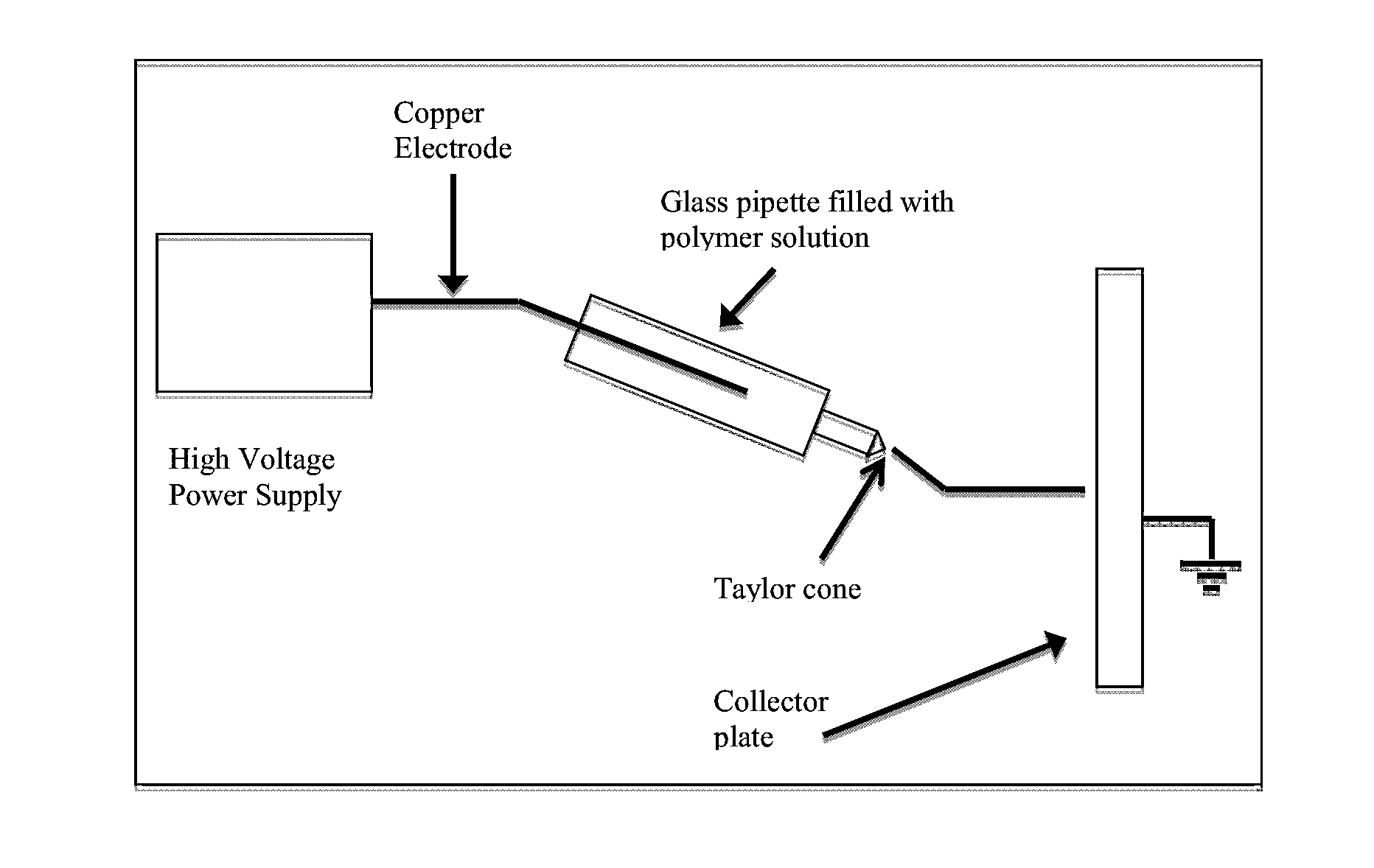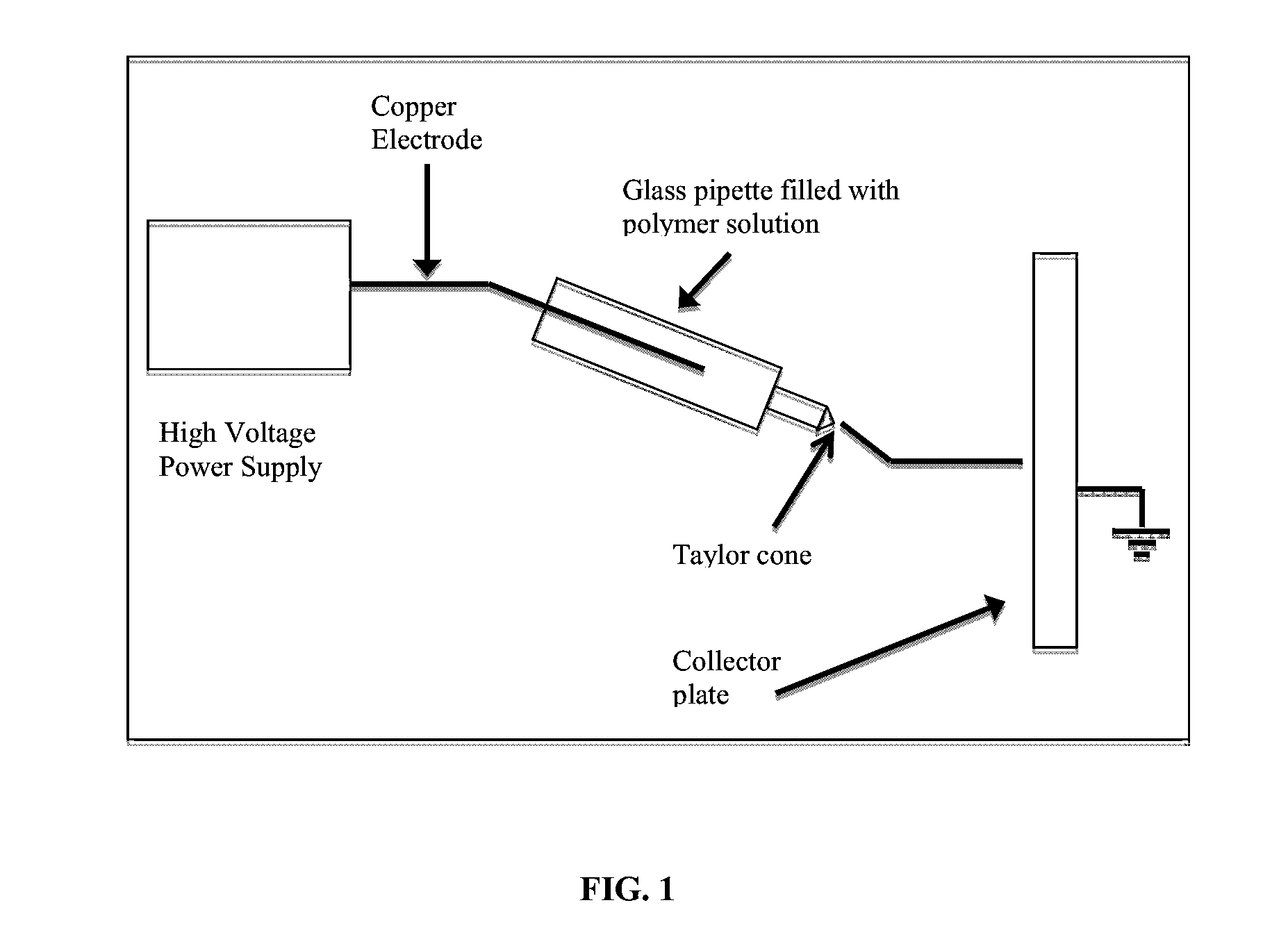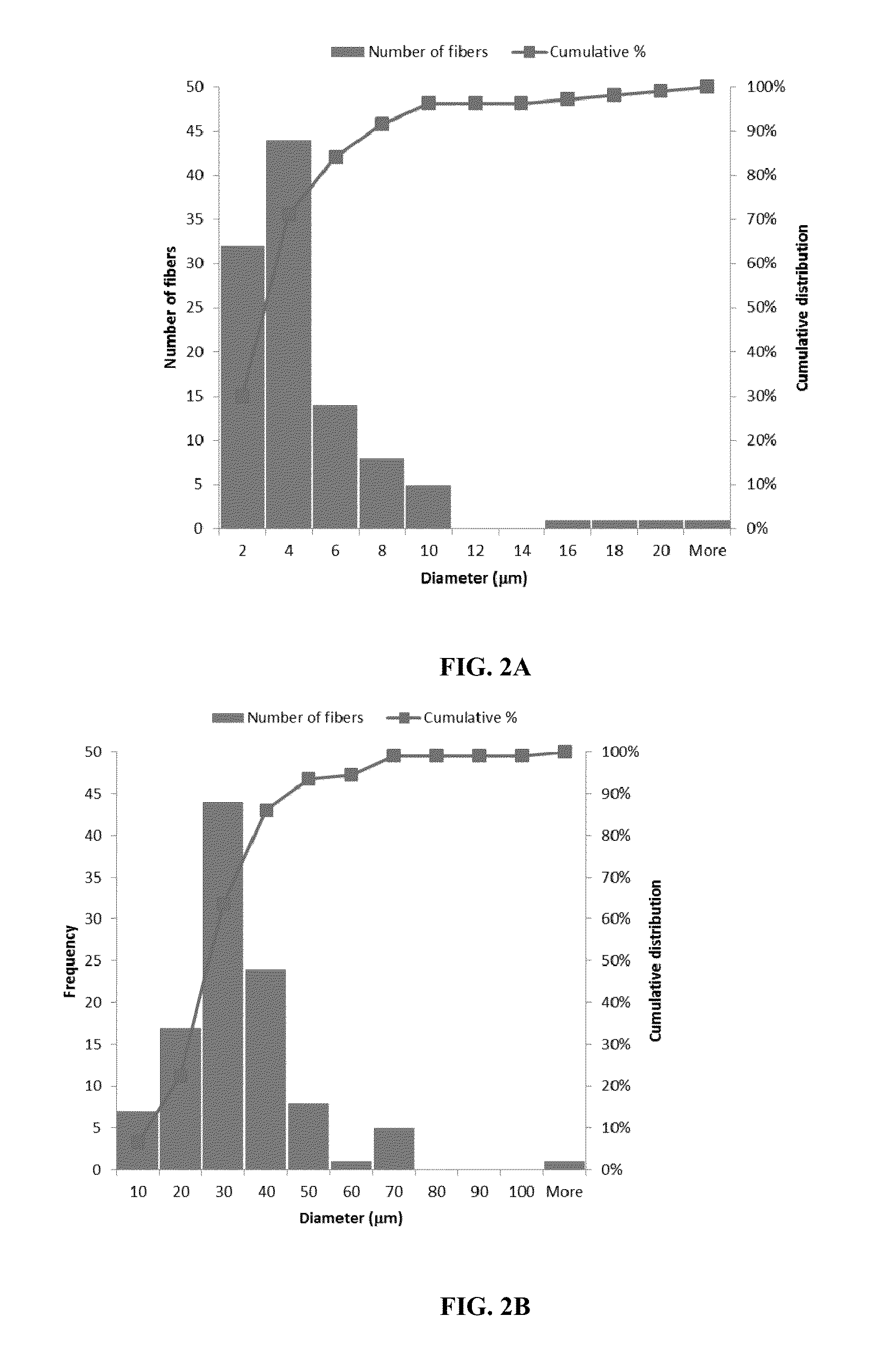Ultrafine Electrospun Fibers of Poly-4-Hydroxybutyrate and Copolymers Thereof
a technology of electrospun fibers and polyhydroxybutyrate, which is applied in the direction of braiding, knitting, prosthesis, etc., can solve the problems of significant drop in the molecular weight of p4hb, limited commercial use, and materials with substantially different thermal and physical properties, and achieve high surface area to volume ratio
- Summary
- Abstract
- Description
- Claims
- Application Information
AI Technical Summary
Benefits of technology
Problems solved by technology
Method used
Image
Examples
example 1
Preparation of Ultrafine Fibers of P4HB by Electrospinning with Low Molecular Weight Polymer
[0095]P4HB (Tepha, Inc., Lexington, Mass.) (Mw 109 kDa) was dissolved in a solvent or solvent mixture as shown in Table 1. Ultrafine fibers of P4HB were produced as described above, using the conditions shown in Table 1 for solvents, polymer solution concentration, voltage, distance between the capillary needle and collector plate, time of collection, and collector type. The electrospun ultrafine fibers were collected under ambient conditions of temperature and humidity. The temperature was 27° C. (81° F.), and the relative humidity (RH) was 57%.
TABLE 1PolymerTime ofConc.VoltageNeedle to collectorcollectionNature ofSampleSolvent(wt / vol %)(kV)distance(min)collectorA1CHCl320113 in (7.62 cm) 5Al panA2CHCl320114.5 in (11.43 cm) 5Al panA3CHCl320116 in (15.24 cm)5Al panA4CHCl3201110 in (25.4 cm) 15Al panA5CHCl320116 in (15.24 cm)5Steel screenA6CHCl320116 in (15.24 cm)5Light weightP4HB meshA7CHCl3 / ...
example 2
Preparation of Ultrafine Fibers of P4HB by Electrospinning with High Molecular Weight Polymer
[0096]P4HB (Tepha, Inc., Lexington, Mass.) (Mw 401 kDa) was dissolved in a solvent or solvent mixture as shown in Table 2. Ultrafine fibers of P4HB were produced as described in the methods above using the conditions shown in Table 2 for solvents, polymer solution concentration, voltage, distance between the capillary needle and collector plate, time of collection, and collector type. The electrospun ultrafine fibers were collected under ambient conditions of temperature and humidity. The temperature was 27° C. (81° F.), and the relative humidity (RH) was 57%.
[0097]In the cases of samples B8-B13, the ultrafine fibers were collected directly on a P4HB mesh. In the cases of samples B12 and B16, where the collectors were a regular weight P4HB mesh and a steel screen, the collectors were sprayed with static guard prior to the collection of the ultrafine fibers.
TABLE 2PolymerNeedle toTime ofConc....
example 3
Comparison of Fiber Molecular Weight Derived by Electro Spinning Versus Melt Blowing
[0100]The molecular weight Mw of a sample of the electrospun ultrafine fibers of Table 1 (low molecular weight P4HB—Sample A7) was determined by GPC relative to polystyrene, and found to be 107 kDa. Therefore the low molecular weight P4HB polymer lost a Mw of only 2 kDa (or approx. 1.8%) during processing into the ultrafine fibers of Sample A7.
[0101]The molecular weight Mw of a sample of the electrospun spun ultrafine fibers of Table 2 (high molecular weight P4HB—Sample B6) was determined by GPC relative to polystyrene, and found to be 383 kDa. Therefore the high molecular weight P4HB polymer lost a Mw of only 18 kDa (or approx. 4.5%) during processing into the ultrafine fibers of Sample B6. The molecular weight Mw of Sample B14 shown in Table 2 was also determined by GPC relative to polystyrene, and found to be 364 kDa representing a loss of P4HB Mw of 37 kDa (or approx. 9.2%) on electrospinning.
[01...
PUM
| Property | Measurement | Unit |
|---|---|---|
| Fraction | aaaaa | aaaaa |
| Percent by mass | aaaaa | aaaaa |
| Diameter | aaaaa | aaaaa |
Abstract
Description
Claims
Application Information
 Login to View More
Login to View More - R&D
- Intellectual Property
- Life Sciences
- Materials
- Tech Scout
- Unparalleled Data Quality
- Higher Quality Content
- 60% Fewer Hallucinations
Browse by: Latest US Patents, China's latest patents, Technical Efficacy Thesaurus, Application Domain, Technology Topic, Popular Technical Reports.
© 2025 PatSnap. All rights reserved.Legal|Privacy policy|Modern Slavery Act Transparency Statement|Sitemap|About US| Contact US: help@patsnap.com



